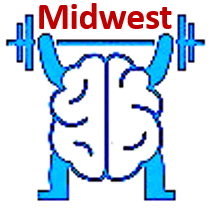I coach IT teams to grow by helping them adopt Toyota Kata to realize various Directions. The Improvement Kata provides me as a coach a scientific thinking pattern to help teams in their journey.
KiC-1 as described in katatogrow.com is a simulation activity for teams to practice Improvement Kata. This week, I facilitated a virtual version of KiC-1 using a virtual board, I just call it vKiC-1. Participants were from the USA, New Zealand, Mexico and Qatar; they formed one team.
This post is about how I facilitated this activity.
Stage-A Grasping Current Condition
Given the simple structure of Improvement Kata, I minimized lecturing and just focused on describing its 4-Steps at high-level. I explained Improvement Kata stating this is the natural way of working: Teams get a Direction from their higher-ups and then plan to achieve it based on understanding of their Current Condition. Afterwards, teams plan and act to achieve this Direction.
Toyota Kata has its way of doing this natural way of work, by following the next 4-steps.
Step-1 Direction
The Direction has to be a measurable new customer experience that teams do not know yet how to achieve it – this Direction came from senior leaders. Since the Direction is aligned with market demand, teams cannot change it.
Step-2 Current Condition
Teams do detailed process analysis of their existing process based on data and facts; they create understanding of their current operating patterns beyond biases and assumptions.
Step-3 Target Condition
Managers empower their teams to imagine their desired operating pattern in 1-4 weeks. This pattern is ‘thought’ to advance the teams towards the Direction, and to validate their hypothesis (their underlying thinking from choosing this Target Condition).
Step-4 Experimenting towards Target Condition
Again, managers empower their teams to do inexpensive Plan-Do-Check-Act (PDCA) Steps to address various obstacles on their way to the Target Condition.
Managers as Coaches
Managers coach teams on Toyota Kata thinking pattern; they are involved daily with their teams in the above 4-steps; if teams did not achieve their Direction, it can be because their managers did not coach. Rather than micro-management, managers daily involvement with their teams provides psychological safety needed for their teams to experiment as the way of work.
Right away, I explained the Direction, which is “building the puzzle in 15 seconds”. Then, we jumped into the virtual board to show the participants:
– How they can navigate, and
– The various sections of the board while focusing on the puzzle section.
Then, I asked the participants to learn on the nature of work (I call it Type of Work) by building the puzzle for two rounds, and recording the time it took for each round. This time represents their current process performance.
It took some time for the participants to become comfortable with the virtual board to the level that they can actively participate. It took also some more time so that they can become at ease working with each other.
Reflections
- Getting familiar with virtual board is akin to when team members learn on the tools they will need to use in their work. Meaning, there will always be required learning at the start.
- Being culturally diverse members who even do not know each other, the initial two rounds of building the puzzle allowed participants to start building a working relationship.
- Participants were more engaged when explaining Improvement Kata one step at a time, then relate that step to its implementation in the visual board.
Stage-B Rules for Planning and Renewal
Rule 1: Participants establish a Target Condition, for simplicity it is the desired speed to build the puzzle (for example 60 seconds per build), that to be achieved in a maximum of three PDCA Steps. I encouraged the participants to think about the Target Condition, using the learning they acquired from practicing building the puzzle. Also, I told them the Target Condition is a sort of design they create for how they ‘think’ they need to operate, therefore it entails hypotheses that can only be validated when participants reach it.
Regardless of whether achieved or not, participants have to establish their next Target Condition when any of the following events happen:
– Participants completed three PDCA Steps.
– Participants achieved the desired speed.
Rule 2: A time-boxed planning for each PDCA Step aimed to have answers to the following three questions:
– What the participants will try?
– What obstacles they are addressing?
– What they expect to happen?
The input to this planning is participants reflection (learning) from the actual results of their previous PDCA Step(s).
Rule 3: Participants answer the Five Coaching Questions before trying the PDCA Step. What matters more than solving the puzzle fast, is to impart Scientific Thinking as the way participants work. By acting as their manager, I asked these coaching questions for the purpose of:
– Learning about how they think
– Learning on the work
– Ensuring that they apply Improvement Kata thinking pattern in addressing the problem at hand
Stage-C Practicing
As they started building the puzzle, I noticed how intense their practicing was. Also, I noticed varied behaviors, for example:
– Some participants took the lead, and seemed not affected by the limitations of working virtually.
– Some participants could not cope with what was going on, and decided the best help they can do is to step back and just watch.
– Other participants worked behind the scene to ensure the alignment of puzzle-pieces. They contributed to the end result without being the ones who score points.
After completing a PDCA Step
-If participants did not achieve Target Condition: They applied Rule 2 and Rule 3 of Stage-B; then they practiced again.
– If participants achieved the Target Condition: They applied Rule 1 through Rule 3 of Stage-B; then they practiced again.
vKiC-1 simulates the permanent renewal of our way of thinking and acting to achieve the Direction.

